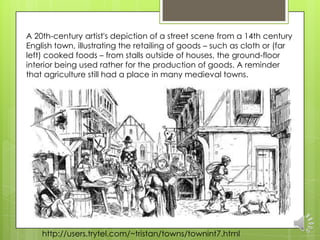This document summarizes economic and social changes in Europe during the Middle Ages, including an agricultural revolution that led to population growth, the revival of trade between growing towns and cities, and the rise of guilds to regulate skilled labor. New trade routes and fairs connected regions and allowed the exchange of goods, stimulating further expansion of towns and the development of a middle class distinct from nobles and clergy.



















